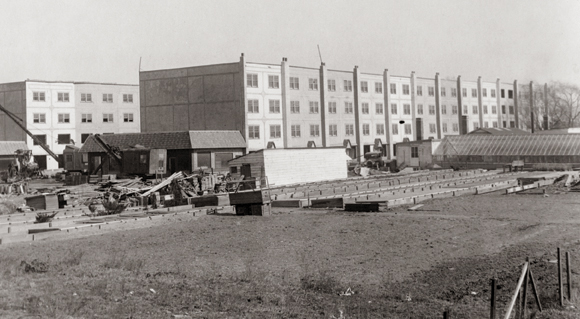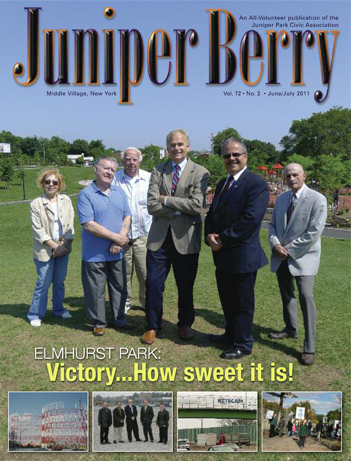Juniper Valley Park is a defining feature of our community. We all know and love the park for what it offers us today, but do we ever stop to think about where this incredible resource came from? Do we ever wonder how this fundamental piece of our community came to be? It turns out Juniper Valley Park has a wonderfully unique and incredibly historical past.
The park’s history can be traced all the way back to 1776 during the American Revolutionary War. During that time the park was known as the Juniper Swamp and it was a strategic location during the war’s Battle of Long Island. American soldiers used the park as a place to hide when British troops invaded New York City and Long Island. Once the British found the swamp, they then used the swamp to camp out. Just think; our park was used by the soldiers who fought for our independence, and was actually a part of one of the most important turning points in American history.
During the next century, the park, which was still the Juniper Swamp, was mostly used as farmland and was known as an abundant peat bog. The most notable farmer who purchased swampland to use for farming was Thomas Pullis, the same Pullis whose cemetery still exists at the park to this day. Mr. Pullis farmed his land during the early 1800s.
The park being used as farmland continued into the 1900s when it also became known as a lush environment where floras thrived. Roland M. Harper, a botanist, identified unique and diverse plant life growing in the swamp. Mr. Harper identified two types of plants that were growing in the swamp that grew nowhere else in the five boroughs except for the Juniper Swamp. He identified leatherleaf; a green shrub whose leaves are dotted with gold and the herb called arrowhead. In addition, Mr. Harper made note of the abundance of blueberry bushes that were growing in the swamp, but unfortunately as time went on these unique and interesting plants were pushed aside to make way for construction.
Mr. Harper made his observations in 1918, and it was the beginning of the 1920s that brought some drama and excitement to the swamp. Arnold Rothstein (inset photo, right), notorious gambler and the man who “supposedly” fixed the 1919 World Series, who was recently made relevant again through the HBO series Boardwalk Empire, bought the swampland in an attempt to make a quick, sneaky buck. Rothstein constructed what was dubbed as the “phantom village;” 48 houses that were built on 50 acres of land from the swamp. Now, calling these structures houses is generous. They were merely shells of homes, were built without foundations and were absolutely uninhabitable. Ever the con-man, Rothstein built these homes to give potential buyers of the land the impression that it was a residential community which would inevitably make the land worth more, and would put the profit turned from selling the land right in Rothstein’s pocket. Rothstein wanted to sell the land to the city to be developed into an airport, but that plan never came to fruition and Rothstein was murdered in 1928. The phantom village was left vacant. At first, guards patrolled the village but after a while the village was left unattended and began to fall to shambles. Children often used the housing structures as playhouses, but for the most part the houses were left there to rot.
During this same time period, another parcel of the swamp was developed into a racetrack known as the Metropolitan Heights racetrack. The track held its grand opening in August 1927 and was christened with a thoroughbred horse race. Two men were actually arrested on opening day for “bookkeeping,” which is illegal. The 7/8 of a mile dirt track played host to horse, dog, car and motorcycle racing and was a source of pure entertainment for the community. The auto races were very popular and even took place at night. The track had its fair share of memorable moments including a traumatic experience that took place during the track’s opening day for the 1929 season. Auto racer Bernie Katz, after claiming to see a boy standing in the middle of the track, swerved his car to get out of the way while going 80 miles-per-hour on a turn and crashed into the audience. The unfortunate crash resulted in two fatalities and three serious injuries; one of the injured being Katz.
Once the 1930s rolled around city officials were ready to do something about the swampland. Robert Moses, mostly responding to the phantom village eyesore, wanted to transform the swamp land into a resource for the community and proposed to develop the land into a park. Moses was Park Commissioner at the time and wanted to give something to the Middle Village and Maspeth communities. In 1937 the city finally acquired the land after buying it from Rothstein’s estate and soon discovered an absolute wealth of peat moss. Rothstein never found the moss as he didn’t bother to build foundations for his houses, but the city found it and harvested over half a million dollars worth of it. Once the moss was harvested, turning the swamp into a park commenced in 1941. In 1942, thanks to the Works Progress Administration, Juniper Valley Park made its debut.
I’ve always been proud to be a Middle Villager. I’ve always been impressed with our sense of community and peaceful, beautiful neighborhood that is right outside of the hustle and bustle of Manhattan. But knowing about the history of our town makes me even more proud and excited to call Middle Village home. Soldiers during the Revolutionary War took refuge in the park down the street from my house; in the park I spent most of my childhood and summers. There was certain plant-life that only grew in one spot in all five boroughs; Juniper Valley Park. One of the most notorious figureheads from the 1900s used our park as a moneymaking scheme. Was it wrong? Absolutely. But that’s not going to stop me from telling that story to anyone who will listen because, hey, it is pretty cool. On the outside Middle Village may seem to be just another suburb, just another place to live, but really, we live in a community rich in history with more stories just waiting to be told.
Look for Part Two of Juniper Valley Park in the September 2011 Juniper Berry.




